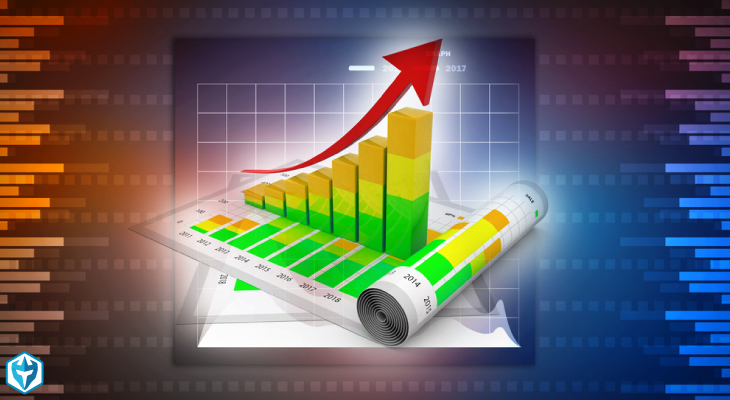Definition
In reducing balance of depreciation method there will be greater charge in relation to the depreciation expense in the initial years in comparison to the same charge during the later years of the useful life. The depreciation percentage is periodic charged on the computed balance after the depreciation is deducted from cost of the asset. This method is also called accelerated depreciation method as higher cost in relation to the asset is depreciated in the initial and earlier years pertaining to the asset useful life and lower is charged as an expense in later years.
Explanation:
It is important to note that under the umbrella of the reducing balance method in relation to the computation of the depreciation expense, the depreciation charge pertaining to the final period of the useful life is essentially equal to the difference between the then Net book at the commencement of that particular accounting period and the scrap value assessed by the management at the point of time of putting that specific asset to use. This will be a verification pertaining to the accounting of the whole of the depreciation charge for that particular asset. The primitive feature of reducing balance method is that the depreciation expense is contained in each of the subsequent period of use of the asset. Taking into account the capacity to generate the cash flows, an interesting point that will be revealed from this analysis would be that the asset would generate higher cash flows in the beginning half of the useful year in comparison to the later years of the very same asset.
How to calculate depreciation by reducing balance method
(Net Carrying Amount – Assessed Residual Value) x Percentage Rate of Depreciation Rate
Aforementioned formula will be applied in relation to the computation of the annual depreciation charge. In the above formula, Net Carrying amount is the asset value at the commencement of the specific accounting year. In order to calculate it, accumulated depreciation needs to be deducted from the Asset value. The second term in the formula is Assessed Residual Value. Precisely, it is the amount which would be expectedly realized in the event of the selling of the asset subsequent to the consumption of the whole of its useful life. This is amount which is not depreciated as it is expected that this amount which will be received by its sale not by the use of asset. Depreciation Rate precisely the rate which defines the pattern in which economic benefits in relation to an asset would be expectedly consumed over the useful life pertaining to this very asset.
Which Assets to be depreciated under Reducing Balance Method
This method of depreciation yield useful pattern in relation to the analysis of the asset use. The depreciation charge yields higher value in relation to the initial and earlier useful life years in comparison to the lower charge for the latter half of useful life. Illustratively, I.T gadgets and equipments, computers have greater utility in the earlier years of its useful life. I.T equipment and computers becomes obsolete in a few years. I.T and computers products have a smaller life cycle. The technological advancement in this industry is very fast. New technology replaces the old technology very quickly. So employing the technique of reducing balance method ensures that depreciation charge corresponds to how economic benefits from these kinds of assets are consumed.
Example 1
The useful life in relation to the specific asset is 3 years and the asset is bearing cost amounting to $5,000. The assessed value in relation to the asset residual value is $1,000. Last but certainly not the least, the rate of the depreciation charge would be 25% and the company resolved in the favor of the reducing balance method in relation to the computation of the depreciation charge.
Depreciation expense in relation to the four years is tabulated below:
Year
|
(NBV-R.V)*Rate
|
Depreciation
|
Accumulated Depreciation
|
1
|
(5000-1000)*25%
|
1,000
|
1,000
|
2
|
(4000-1000)*25%
|
750
|
1,750
|
3
|
(3250-1000)*25%
|
562
|
2,312
|
4
|
(2688-1000)*25%
|
1,688*
|
4,000
|
*The 1688 last year depreciation is in fact difference pertaining to two values. Firstly, asset book value at the point of the commencement of specific period of accounting and secondly the assessed residual value or alternatively the scrap value. This step yields assurance regarding the complete depreciation of the asset.

EmoticonEmoticon